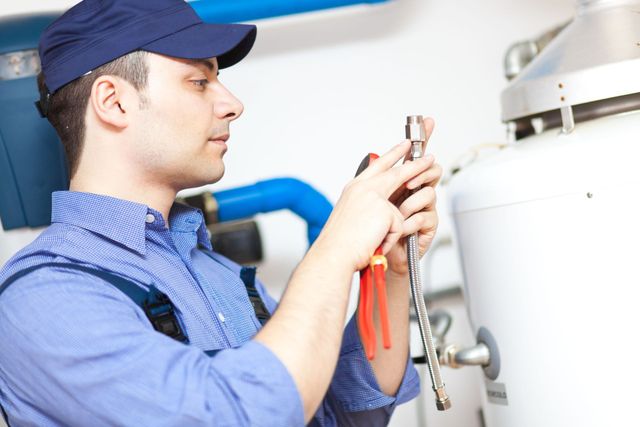We've found the article pertaining to Tips For Maintaining Your Hot Water Heater directly below on the net and accepted it made good sense to share it with you on this site.

Hot water is important for daily comfort, whether it's for a rejuvenating shower or washing meals. To ensure your hot water system runs effectively and lasts longer, regular maintenance is key. This write-up supplies functional pointers and understandings on just how to keep your home's warm water system to prevent interruptions and expensive repair work.
Intro
Maintaining your home's hot water system might seem difficult, however with a couple of straightforward actions, you can guarantee it operates smoothly for years to come. This guide covers everything from comprehending your hot water system to DIY maintenance tips and recognizing when to call specialist aid.
Relevance of Preserving Your Hot Water System
Regular maintenance not only prolongs the life expectancy of your hot water system but also ensures it runs successfully. Disregarding upkeep can cause reduced effectiveness, higher energy bills, and also early failing of the system.
Indications Your Hot Water System Needs Upkeep
Understanding when your hot water system requires interest can prevent significant problems. Look out for indicators such as inconsistent water temperature level, strange sounds from the heating unit, or rusty water.
Recognizing Your Hot Water System
Prior to diving into maintenance tasks, it's handy to recognize the fundamental elements of your warm water system. Normally, this includes the hot water heater itself, pipelines, anode rods, and temperature controls.
Month-to-month Maintenance Tasks
Regular month-to-month checks can assist catch small concerns before they escalate.
Purging the Hot Water Heater
Flushing your hot water heater eliminates sediment build-up, enhancing performance and lengthening its life.
Checking and Changing Anode Rods
Anode rods stop corrosion inside the storage tank. Inspecting and replacing them when broken is essential.
Checking and Adjusting Temperature Level Setups
Changing the temperature level settings guarantees ideal performance and security.
DIY Tips for Upkeep
You can perform a number of maintenance jobs yourself to keep your warm water system in top condition.
Looking for Leaks
On a regular basis examine pipelines and connections for leakages, as these can result in water damages and higher expenses.
Examining Pressure Relief Valves
Evaluating the stress safety valve ensures it works appropriately and stops too much pressure build-up.
Insulating Pipelines
Insulating warm water pipes minimizes warmth loss and can save energy.
When to Call a Specialist
While DIY maintenance is beneficial, some problems call for specialist experience.
Complicated Concerns Requiring Professional Assistance
Instances consist of major leakages, electric troubles, or if your water heater is continually underperforming.
Routine Specialist Maintenance Conveniences
Expert upkeep can include thorough assessments, tune-ups, and ensuring compliance with safety and security criteria.
Final thought
Normal maintenance of your home's warm water system is crucial for efficiency, durability, and price savings. By adhering to these tips and understanding when to look for professional aid, you can make sure a reliable supply of hot water without unforeseen disturbances.
How to Maintain an Instant Hot Water Heater
Before tinkering with your hot water heater, make sure that it’s not powered on. You also have to turn off the main circuit breaker and shut off the main gas line to prevent accidents. Also turn off the water valves connected to your unit to prevent water from flowing into and out of the appliance. 2. When you’re done, you have to detach the purge valves’ caps. These look like the letter “T” and are situated on either side of the water valves. Doing so will release any pressure that has accumulated inside the valves while at the same time avoid hot water from shooting out and burning your skin. 3. When the purge valves’ caps are removed, you have to connect your hosing lines to the valves. Your unit should have come with three hoses but if it didn’t, you can purchase these things from any hardware or home repair shops. You can also get them from retail stores that sell water heating systems. Read the user’s manual and follow it to complete this task properly. When the hosing lines are connected, open the purge port’s valves. 4. You should never use harsh chemical cleaners or solutions when cleaning your unit. Make use of white vinegar instead. It should be undiluted and you’ll probably use about 2 gallons. 5. Now flush your water heater. This task should probably take about 40 minutes. We can’t give you specific directions for this because the procedure is carried out depending on the type, model and brand of your heater. With that being said, refer to the user’s manual. 6. When you’re done draining the unit, you have to turn off the purge port valves again. Remove the hosing lines that you earlier installed on each of the water valves. Put the valve caps (purge port) back in their respective places and be very careful so as not to damage the rubber discs that are found inside these caps. 7. Now that everything’s back in place, check your user’s manual again to find out how to reactivate your water heating system. 8. Once it is working, turn one of your hot water faucets on just to let air pass through the heater’s water supply pipes. Leave the tap on until water flows smoothly out of it. https://www.orrplumbing.com/blog/2014/september/how-to-maintain-an-instant-hot-water-heater/

As an enthusiastic reader on How to Maintain a Hot Water Heater in a Few Simple Steps, I imagined sharing that article was important. Are you aware of another individual who is involved in the subject? Do not hesitate to share it. Thanks a lot for your time. Come back soon.
Book Your Appointment